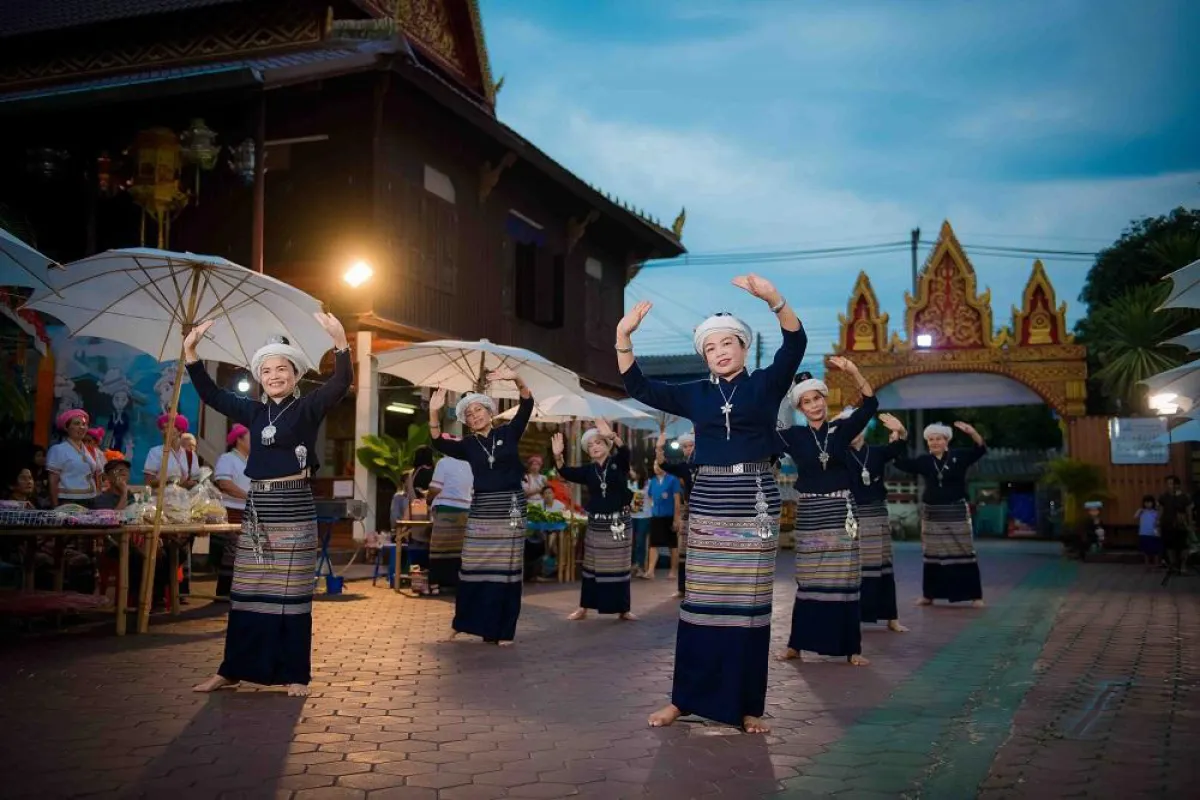
Cultural Tourism at Dai Lue, Mueang Mang, Mueang Yuan in Payao
Experience a trip for cultural tourism at Dai Lue, Mueang Mang, Mueang Yuan in Phayao province, a charming community with a unique cultural identity. The Dai Lue are an ethnic group of people who speak a language in the Dai family; they were originally from the Xishuangbanna region in the southern part of Yunnan Province in China. The community of Dai Lue, Mueang Mang, Mueang Yuan was established by one of those immigrant groups who migrated from Xishuangbanna region and settled down at Yuan Subdistrict, Chiang Khum District, in Phayao, Thailand. They used the name of their original town as the name of their villages, such as Ban Yuan and Ban Mang.
The Dai Lue people possess unique traditions, cultures, arts, and lifestyles. The Cultural Center of Dai Lue (Wat Yuan) is a museum that collects the history of the Dai Lue Chiang Khum people, as well as exhibiting traditional arts and providing professional training for Dai Lue folks. Dai Lue clothes have unique and colorful patterns, such as the Khruea flower pattern, Kor flower pattern, horse pattern, and Tung flower pattern.
Within this community stands a pagoda known as Doi Khum, containing a relic of the Buddha. The legend goes that the old name of Chiang Khum was Ciang Charow, located around Ban Koom Moo 6 in Rom Yen Subdistrict, Chiang Khum District. The ruler of the city built this pagoda to hold the Buddha's relic on top of a mountain outside the city as a sign of redemption. Later, a huge source of gold was found in a creek behind the mountain, so people started calling that mountain "Doi Khum," leading to the pagoda on it to be called "Pra Tat Doi Khum." Afterward, Chiang Charow changed its name to Mueang "Chiang Khum."
Next to the museum is Pra Tat Sopwan, which is around 800 years old. Inside the pagoda are strands of hair and the chin bone of the Buddha himself, and if you would like to see Dai Lue arts, go straight to Wat Saen Mueang Mang, another ancient temple that is believed to have been built during the beginning of the Rattanakosin Era. The roof was built and covered in beautiful wooden layers, and the wall paintings inside were painted by a local artist, telling stories of the lifestyle of the Dai Lue people. The signs within the temple are both in Thai and Chinese, as they travel between Thailand and Xishuangbanna.
Another unmissable stop is Wat Taa Faa Tai, which is considered one of many beautiful examples of Dai Lue architecture; it was believed to be built during the beginning of the Rattanakosin Era. So you see not only the charm of the Dai Lue people's way of life but also the exquisite arts and traditions, as well.
Aside from the beauty of the temple’s architectures, their local food in Khaan Took style is also famous, as well as Dai Lue performances such as sword dance, Zheng dance, Sa Teep Dance (similar to Dai Lue Chiang Khum style), Happy Trip in Phayao Dance, Guy Lai Dance, and Nail Dance. There is also local music and many activities to learn, such as how to make crisp rice, Thai caramel, and rice crackers, as well as how to arrange flowers to give to monks, and how to dye clothes.
Visiting and experiencing the way of life of Dai Lue Mueang Mang Mueang Yuan will definitely be a memorable time.